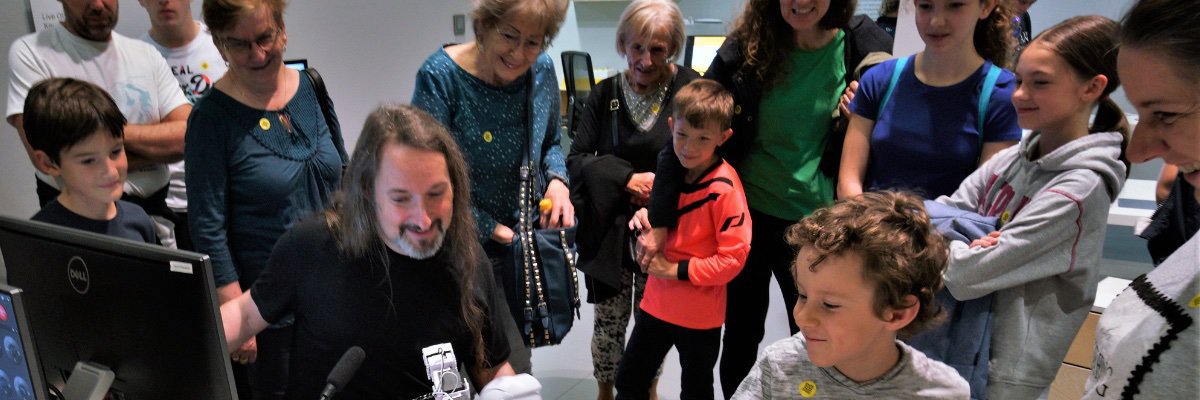Two years ago, Boston Public Schools bet on an innovative new approach to rerouting school buses, a task that had previously required a team months of planning. The city issued the Boston Public Schools Transportation Challenge with the aim of using modern algorithmic approaches to tackle school transportation routing and start times.
However, with winners chosen, an algorithm created, and new routes selected, the district faced immediate backlash from parents unprepared to make such sudden changes to their schedules. The district halted implementation of proposed changes to the school start times, though it proceeded with some changes to the bus routes.
Despite Boston’s initial road bumps, Lowell Public Schools and other school districts are now looking to the same or similar software, hoping to learn from the challenges Boston faced as they look for new approaches to dealing with bus routing amid changing traffic patterns, student populations, and limited resources.
Lowell Public School transportation director John Descoteaux is already considering how next year’s crop of students will be able to get to and from their designated buildings. Descoteaux is hoping that soon he will be able to use the power of optimization models to help them solve some of these puzzles in Lowell. For years he’s been using a program called VersaTrans to help juggle the different needs and start times, but Lowell is currently in conversation with researchers at the Massachusetts Institute of Technology to employ the algorithm designed for Boston to help address some of these issues.
One challenge is the Lowell Collegiate Charter School’s planned addition of nearly 100 students next year and that school’s division into middle and high school groups. In Massachusetts, charter school students and parochial school students who live in disparate parts of the town are entitled to citywide transportatio; traditional public schools assign schools to students close to their homes.
Accommodating the need to travel routes that can vary widely based on which students attend charter schools is a problem that Descoteaux is happy to tackle, but there are other variables to consider: five other citywide schools, variables like the school start times, and the number of buses available to the district. Also complicating things: the construction of a major judicial center in the city’s center, one of the largest projects in the city’s recent history and one reshaping morning traffic patterns.
“It puts a strain on the system. In some instances, we may have six students in the school bus; in other cases we have 70,” said Descoteaux, who has led orchestration of how the district’s now roughly 9,500 schoolchildren actually make it to class in the morning. “Transportation is timing. We make it work with 66 buses with three tiers in the morning, three in the afternoon, sometimes four.”
The problems can become something like an ever-evolving algebra problem. It’s a familiar challenge to others in Descoteaux’s role. With nearly 60 million public school students in the country, most of whom are entitled to school bus transportation to help them get to class, the issues and costs of bus routes are a constant puzzle.
“I look at it like we’re a kind of a mini-Boston. I think we’ll try to educate the parents if [these MIT researchers] do come through and they do this study. But you can’t make everyone happy … We’re three weeks into school and parents are still coming in saying, ‘I can’t get to work; I need to have my school changed.’ A lot is planned ahead of time,” said Descoteaux. His department’s budget is currently $11 million. “The variables involved are so numerous to mention. You’re going to upset some families. It’s not going to be a particularly positive experience for a lot of people. But if [the MIT researchers say] you’re going to save $2 million in transportation which could go toward some of our schools that need the help, then you’ve got to weigh the pros and cons.”
The drive behind the busing algorithm
“We were already working on transportation problems, like the ones that Uber uses to assign drivers to riders,” said Sebastien Martin, who, along with Arthur Delarue, is part of the MIT graduate student pair who won the BPS challenge. “We got to talk to different actors: parents, those working at the BPS. We focused on optimizing the transportation system and how that is related to the choice of start times for the schools. After this event, we were quite motivated. It was impactful. It’s even better for us when it helps some people.”
Soon after, plans were announced to implement the changes, which would also affect the times that various schools began. And while the changes were meant to make everyone’s lives easier and less expensive, the response was not what anyone involved had anticipated.
“Our work was trying to understand what the cost would be for any particular set of bell times. So districts can really understand the cost implications of any policy they choose,” Delarue said. But the proposed changed didn’t take into account parents’ ability to get to work on time or to juggle the schedules of multiple children. Community members packed school board meetings. Some carried signs reading “Families not algorithms”.
The backlash was enough to turn BPS off from talking much about the attempt at innovation - but not off the project altogether. While the district scrapped the proposal to change the school start times, it did use the calculated suggestions for reducing the number of buses and changing the routes during the 2017-18 school year. BPS estimated that it saved between $3 and $5 million in the effort, a number that is difficult to pin down, since costs for transportation simultaneously rise as students are added to the system and needs change.
Overall success is also difficult to gauge. Earlier this month, new BPS Superintendent Brenda Cassellius expressed concern around the persistent tardiness of many buses and has said she intends to do a full reevaluation of BPS transportation.
Despite the experiences of BPS, Lowell got in touch with the researchers soon after the Transportation Challenge, beginning negotiations that are still in the works. The City Solicitor is currently reviewing a nondisclosure agreement, provided by the company set up by the algorithm’s creators. Altogether, Delarue and Martin estimated almost six dozen other schools got in touch about adopting the algorithm.
Other efforts
Other major school systems are also turning to the efficiencies that have made ridesharing such a successful enterprise. The New York City school system, the largest in the nation, recently announced that it would be teaming up with the ridesharing app Via to help improve its routing and busing goals.
“We are delighted to be partnering with the New York City Department of Education to set a new standard of excellence in school transportation,” said Daniel Ramot, co-founder and chief executive of Via in a press release. “We’re thrilled to have an opportunity to further serve the New York community by applying our technology to operate a world-class school bus system.”
Via directed questions to the NYC Public School system. Neither NYC Public Schools nor Via responded to questions or request for comment.
The privately-operated busing company First Student, which operates in 1,100 U.S school districts, also recently announced that it would begin data-gathering efforts in its fleet to help optimize its own routes and transportation efforts.
From the perspective of school transportation managers, the trouble faced in Boston is not a problem with algorithms but in the way that the policy was explained and rolled out.
“What happened in Boston was a problem of communication,” Descoteaux said. A lifelong resident of Lowell, he’s sensitive to the varying needs of the population, the nuances of the city’s transportation routes, and believes that the use of the algorithm will be another tool that will help him get his job done as quickly and efficiently as possible. Getting the various families with their various needs to adjust to new start times or bus routes will require a human touch, and that’s what the algorithm’s creators believe as well.
“What an algorithm can do for you - it cannot choose your policy - it will restrict your options to the good options,” Martin said. “We know how sensitive this whole thing is. Education is tremendously important. You really want to give your best.”
Image by Dean Hochman and licensed under CC BY 2.0.

Algorithmic Control by MuckRock Foundation is licensed under a Creative Commons Attribution 4.0 International License.




